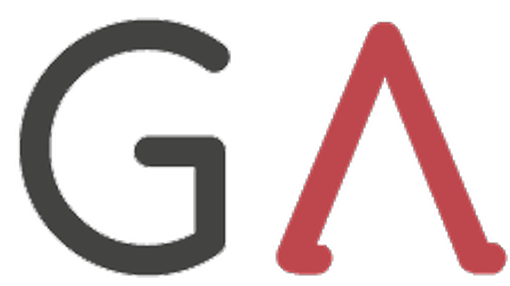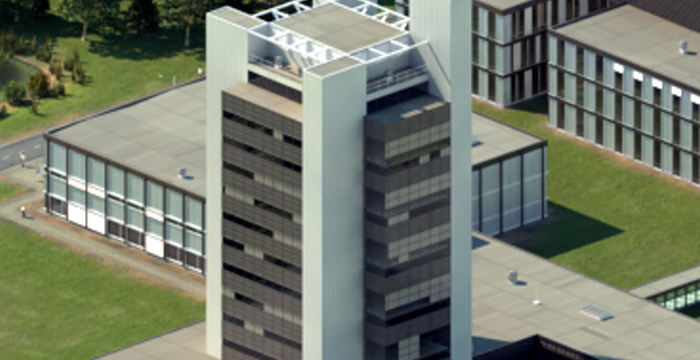Fields of interest
Rehabilitation robotics for the lower extremities, human-machine interaction, dynamic balance control, locomotor adaptation, neuroplasticity
Biography
Edwin van Asseldonk has a master in Human Movement Sciences from the Free University in Amsterdam and a PhD in Biomechanical Engineering from the University of Twente. He currently holds the position of associate professor at the University of Twente. His research aims to improve the walking ability of patients with neurological diseases like stroke or spinal cord injury by using rehabilitation robotics (therapeutic and assistive) and/or non-invasive direct current stimulation. His current research concentrates on developing balance control strategies for wearable exoskeletons and investigating the human-machine interaction. He is principal investigator on different national (funded by STW and ZonMW) projects and co-principal investigator on international projects (funded by EU) on rehabilitation robotics and non-invasive stimulation. He has published over 100 papers and conference proceedings in the area of balance control during stance and walking, motor adaptation, lower limb rehabilitation robotics and non-invasive brain stimulation.
Expertise
Medicine and Dentistry
- Walking
- Gait
- Exoskeleton
- Ankle
- Pelvis
- Joint
Nursing and Health Professions
- Robotics
Engineering
- Joints (Structural Components)
Organisations
Publications
2025
2024
Other contributions
Supervised PhD thesis:
- Robot aided gait training and assessment: development of support strategies and assessment methods for LOPES Bram Koopman (10 December 2014).
- Design of a robot-assisted gait trainer: LOPES II. Johannes Hendricus Meuleman (13 November 2015).
- Foot Placement in balance recovery - complex humans vs simple model (sumacum laude). Mark Vlutters (13 December 2017)
- Trans-Spinal Direct Current Stimulation for the Modulation of the Lumbar Spinal Motor Networks. Alexander Kuck (24 January 2018).
- Motor sequence learning in older adults. Jonathan S. Barnhoorn (18 April, 2018)
- Haptic human-human interaction: motor learning & haptic communication. Niek Beckers (12 July 2019)
- Towards postural balance control of exoskeletons. Amber R. Emmens (8 May 2020)
- Towards personalized robot-assisted gait training. Simone S. Fricke (10 July 2020)
- Integrated spasticity assessment and treatment using disentangled joint resistance. Ronald van 't Veld (25 May 2022)
Research profiles
I am coordinator and lectures of the master courses Human Movement Control and Identitication of Human Physiological systems. Besides I supervise bachelor and master assignments of mainly the BME and ME program.
Besides I am track coordinator of the Biorobotics specialisation of the Biomedical Engineering Master program.
Affiliated study programs
Courses academic year 2025/2026
Courses in the current academic year are added at the moment they are finalised in the Osiris system. Therefore it is possible that the list is not yet complete for the whole academic year.
- 191150480 - Human Movement Control
- 191211208 - Internship EE
- 193640999 - Internship BME
- 193650999 - Masters Assignment
- 195799152 - Internship
- 201400267 - Capita Selecta BME CTW-BW
- 201900223 - Capita Selecta Electrical Engineering
- 202000250 - Internship
- 202200120 - Internship ROB
- 202200122 - MSc-Thesis Project
- 202300349 - Internship ROB / ME
- 202400318 - M12 BSc Assignment BMT
- 202500385 - Internship ROB / AM
Courses academic year 2024/2025
- 191150480 - Human Movement Control
- 191199154 - Internship
- 191199198 - Master Graduation Assignment
- 191211208 - Internship EE
- 193640999 - Internship BME
- 193650999 - Masters Assignment
- 195799152 - Internship
- 201400267 - Capita Selecta BME CTW-BW
- 201700071 - iden. hum. phys. sys.
- 201900223 - Capita Selecta Electrical Engineering
- 202000250 - Internship
- 202200120 - Internship ROB
- 202200122 - MSc-Thesis Project
- 202300349 - Internship ROB/I-TECH
- 202400318 - M12 BSc Assignment BMT
- 202400805 - Final Project I-Tech / BME
Current projects
HEROES: Home-based ExeRgaming fOr Enhancing resistance to falls after Stroke
This project aims to develop the HEROES system, for home-based exergaming (exercise + gaming) to enhance resistance to falls in community-dwelling stroke survivors.

BenchBalance: A device to apply well defined perturbations for benchmarking balance capabilities of wearable robots
This project aims to develop a low-cost perturbation tool capable of measuring well-defined external perturbations manually provided by an experimenter to subjects wearing an exoskeleton. This tool will be used to benchmark balance capabilities of wearable robots.
Balance control in challenging conditions
This project is part of the TTW program Wearable Robotics. The aim of this project is to develop human-inspired control algorithms for exoskeletons to ensure balance is maintained in different challenging conditions during standing and walking.
Exo-aid for Spinal Cord Injury subjects
This project is part of the TTW program Wearable Robotics. The aim of this project is to develop a user-interface, control algorithms, and sensory substitution methods that will allow for fast, stable, and versatile locomotion of people with an SCI walking with an Exo-Aid.
Reflexioning: training the modulation of reflex activity in subjects with Spinal Cord Injury and Cerebral Palsy
This project is part of the STW program NeuroCIMT. The aim of the project is to develop a non-invasive integrated assessment and treatment approach to reduce spasticity and improve walking ability in patients with spinal cord injury and cerebral palsy.

inGAIT
Veni Cristina Bayón Calderón
With inGAIT project, we aim to go beyond the conventional methods of CP rehabilitation by investigating the expansion of novel technologies to daily-life. Our motivation for this research is to improve the quality of life of children with CP and similar motor disorders.
Finished projects
Wearable Robots for Augmentation, Assistance or Substitution of Human Motor Functions (COST Action)
The main aim of this COST action is to Integrate diverse expertise and develop trans-domain competences that are essential to the development of a new generation of Wearable Robots (WRs). The working group on Fondational sciences focusses on identifying the key open issues in human-machine interaction.
LOPES (PIDON)
Follow up project of LOPES. Development of robotic gait trainer suited for a clinical setting and which will be evaluated within the project period in a clinical trial with acute stroke survivors and spinal cord injury subjects.
Mindwalker (EU)
Priming the brain for robotic training (ZonMW VENI)
This project aims to enhance cortical plasticity and functional recovery in stroke survivors by the integration of cortical brain stimulation in robotic gait training
ReLOAD: Motor skill Learning in Older ADults: neurocognitive correlates, individual differences, and interventions to enable healthy aging (NWO)
This project aims to understand the effect of age on learning new motor skills and to assess how non-invasive brain stimulation (tDCS) can increase the capacitiy of older individuals to learn.
ARTS Efficacy of Assist-As-Needed (AAN) Robotic gait Training in sub-acute Stroke survivors (ZonMW)
In this project a radomized clinical trial is performed to compare gait training in LOPESII using an Assist-As-Needed approach to conventional gait training in a population of sub-acute stroke survivors.
Evryon (EU)
BALANCE Balance Augmentation in Locomotion, through Anticipative, Natural and Cooperative control of Exoskeletons (EU)
This project aims to realize an exoskeletal robot that improves the balance performance of humans, targeted at users facing balance-challenging conditions or suffering from a lack of ability to walk or maintain balance during walking.
AWARD: Assessment during Walking using A Robotic Device (STW)
This project aims to improve the outcome of robot-aided gait training by tailoring the robotic support to the individual patient’s impairments. We will develop and evaluate protocols and algorithms to quantify the primary motor impairments while subjects are walking.
NeurAS: NEURoControl- Assessment and Stimulation (ZonMW)
This project aims to improve the outcome of gait training in spinal cord injury patients through development of a novel non-invasive stimulation paradigm that in combination with robotic support promotes neuroplasticity.
Symbitron (EU)
In this project we will develop personalzed wearable exoskeletons for SCI patients. This exoskeleton is controlled with biologically inspired controllers
Our work on the development and use of the robotic gait trainer LOPES and the wearable exoskeleton Mindwalker has attracted considerable national and international attention in the popular media.
In the press
LOPES
Television:
- RTV oost nieuws, May 6, 2014: “Roessingh en Universiteit Twente ontwikkelen revalidatierobot Lopes”.
- Omroep Gelderland nieuws, May 14, 2014: “Sint Maartenskliniek test nieuwe looprobot”.
- BBC news, Sep 25, 2011: “Robo legs help stroke victim to walk”.
- SBS6 Hart van Nederland, Oct 3, 2011: “Robot is doorbraak in revalidatie”.
- Reuters, Jan 12, 2011: “Robot legs help stroke survivors to walk again”.
- NTR-VPRO program Labyrinth, Apr 5, 2011: “De machinemens”.
- Vara’s Nieuwslicht, Nov 19, 2008: “Robot benen helpen mensen sneller op de been”
Radio:
- BNR eyeopeners, May 12, 2014: “Een robot die je leert lopen”.
Newspapers, websites & magazines:
- LOPES II in De Ingenieur, Nov 2014: “Weer leren lopen: robot ontlast fysiotherapeut”
- LOPES II in Bits & Chips, Sep 19, 2014: “Looprobot zet stap naar commerciële versie”
- LOPES II in De Gelderlander, May 9, 2014, : “Robot leert patiënten in kliniek weer lopen”
- LOPES II op RTLnieuws site, May 8, 2014: Looprobot Lopes II is een grote stap vooruit”
- LOPES II op nu.nl, May 6, 2014: “Klinieken zetten nieuwe looprobot in voor revalidatie patiënten”
- Lopes in The Consultant Journal, Oct 2011: “Dutch Rehabilitation robot helps patients to learn how to walk again”
MINDWALKER
Television:
- Euronews, Sep 30, 2013: “Exoskeletons on the March”.
Newspapers, websites & magazines:
- Mindwalker in de New Scientist, Jun 7, 2014: “Exoskelet laat verlamde mensen lopen”
- Mindwalker in de Ingenieur, Sep 6, 2013: “Exoskelet dat het wel doet”.
Mindwalker in Horizon the EU Research and Innovation Magazine, May 30, 2014: “Walking again with an exoskeleton”
News on utwente.nl
- https://www.utwente.nl/en/news/!/2017/11/342217/major-funding-for-wearable-robotics
- https://www.utwente.nl/en/news/!/2017/10/240526/edwin-van-asseldonk-in-dutch-tv-programme-klaas-kan-alles
- https://www.utwente.nl/en/et/be/news/!/2015/6/221734/the-netherlands-and-the-united-states-strengthen-collaborative-research-into-neuro-rehabilitation
Address

University of Twente
Horst Complex (building no. 20), room W106
De Horst 2
7522 LW Enschede
Netherlands
University of Twente
Horst Complex W106
P.O. Box 217
7500 AE Enschede
Netherlands